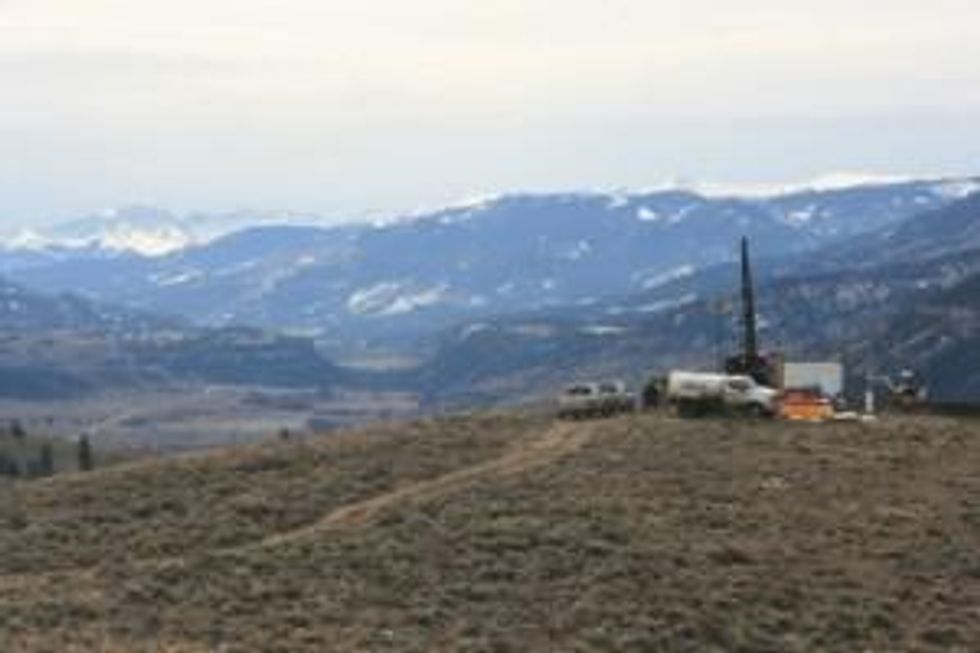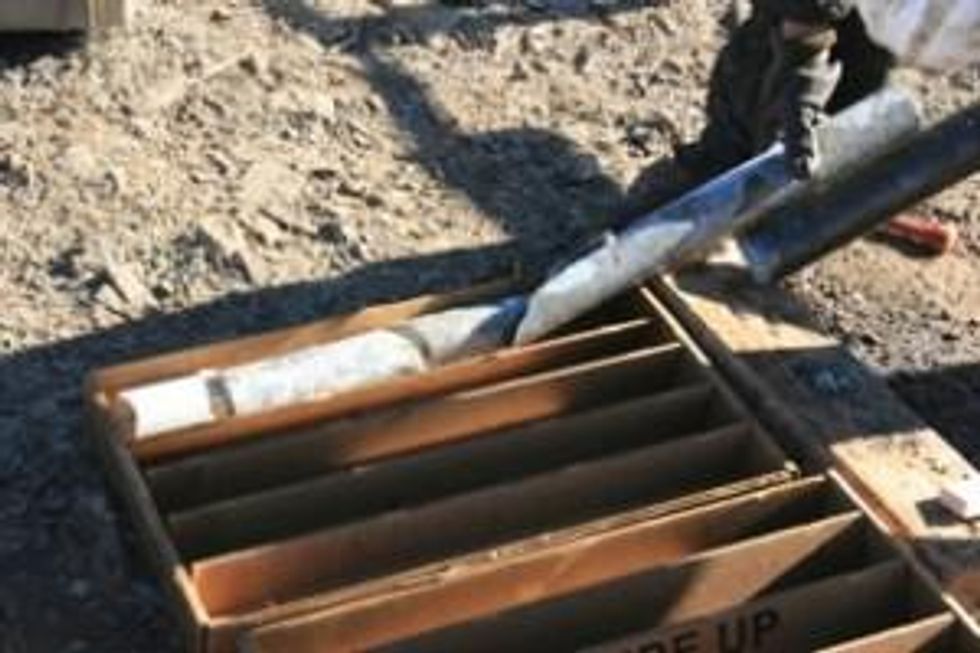- AustraliaNorth AmericaWorld
Investing News NetworkYour trusted source for investing success
- Lithium Outlook
- Oil and Gas Outlook
- Gold Outlook Report
- Uranium Outlook
- Rare Earths Outlook
- All Outlook Reports
- Top Generative AI Stocks
- Top EV Stocks
- Biggest AI Companies
- Biggest Blockchain Stocks
- Biggest Cryptocurrency-mining Stocks
- Biggest Cybersecurity Companies
- Biggest Robotics Companies
- Biggest Social Media Companies
- Biggest Technology ETFs
- Artificial Intellgience ETFs
- Robotics ETFs
- Canadian Cryptocurrency ETFs
- Artificial Intelligence Outlook
- EV Outlook
- Cleantech Outlook
- Crypto Outlook
- Tech Outlook
- All Market Outlook Reports
- Cannabis Weekly Round-Up
- Top Alzheimer's Treatment Stocks
- Top Biotech Stocks
- Top Plant-based Food Stocks
- Biggest Cannabis Stocks
- Biggest Pharma Stocks
- Longevity Stocks to Watch
- Psychedelics Stocks to Watch
- Top Cobalt Stocks
- Small Biotech ETFs to Watch
- Top Life Science ETFs
- Biggest Pharmaceutical ETFs
- Life Science Outlook
- Biotech Outlook
- Cannabis Outlook
- Pharma Outlook
- Psychedelics Outlook
- All Market Outlook Reports
Rare Earth Investing News spoke with Daniel McGroarty, president of US Rare Earths, to find out what his company’s plans are as well as how he views the market as a whole.
Over the past 12 months, the rare earths industry has struggled to come to terms with reserves outside of China and an increase in new production. As a result, prices have significantly dropped from the highs recorded in 2011.
However, a number of exploration and production companies remain bullish on the sector’s long-term future, especially considering the promise of heavy rare earth elements (HREEs).
Rare Earth Investing News (REIN) sat down with Daniel McGroarty, president ofUS Rare Earths (OTCBB:UREE), a US-based rare earth development company, to find out more about what his company has been up to and to gauge his thoughts on the market as a whole.
REIN: Can you give us a brief summary of US Rare Earths and tell us what the company is focused on at present?
DM: US Rare Earths is a rare earths development company, headquartered in New York City, with six properties in three states: Idaho, Montana and Colorado. We went public as Colorado Rare Earths in December 2010, and with the acquisition of our Idaho and Montana properties, we changed our name to US Rare Earths in the second half of 2011. We’ve assembled a portfolio of properties that have shown significant rare earth element (REE) expression, with an emphasis on HREEs. Given the growing demand for REEs in the US and worldwide, our task in 2013 is to conduct an aggressive drill program that will help us assess which properties present the most promising potential.
REIN: Please tell us a little bit about US Rare Earths’ recently announced plans to start drilling for samples in Montana. Can you describe the company’s aims/goals? Has there been any historical work done to date, or are you headed into uncharted territory?
DM: There is historical work and varying degrees of data for all of our Idaho and Montana properties. What we’re doing is layering new work — surface samples, trenching, drilling and even aeromag work — over the historic material to help us focus on the most promising areas. In 2013, we’ll be looking to validate some of the most interesting historical work through our drill program.
Sheep Creek in Montana is the site of our newest permit, received just this month, and we’re excited to factor drill results there into our considerations. We’ve done recent surface sampling there that compares very closely to historic work done 50 years ago. One objective for our 2013 program will be to validate this historic work, which will fast track us to a full understanding of the high-grade potential of this property.
REIN: What sort of REEs are you hoping to discover in these new exploration areas?
DM: We are beginning to separate out a subset or basket of “critical rare earths” that will be our main focus at our Idaho and Montana properties. These are largely the HREEs, with the major exception being neodymium, easily the most sought-after light rare earth element (LREE). We are intrigued that some of our surface samples in Idaho suggest that the host monazite — often cerium enriched �— may be unusually neodymium enriched. We will be looking to prove up our provisional work through a very active drill program in both states when the weather clears.
REIN: In an earlier interview, you mentioned that US Rare Earths had attracted considerable interest from several major multinationals, and that a geologist from a major defense contractor had spent significant time at your properties. Has anything come of these relationships?
DM: We have several non-disclosure agreements in place as well as ongoing discussions with major manufacturers and organizations dependent on reliable rare earth supply. Our efforts to prove up the REE mineralization at our properties are entirely consistent with the conversations we’re having about potential partnerships. REE users in the US and elsewhere are anxious to diversify away from excessive dependence on China as their sole supplier. We’re exploring ways to meet this demand and contribute to the certainty of supply.
REIN: Can you provide a summary of your company’s recent drill results in Idaho? Were these results better or worse than expected and what does that mean for the project moving forward?
DM: We received our permit for one of our three Idaho properties — Diamond Creek — in fall 2012 and mobilized a drill program in early December. We got in two drill holes before weather forced us to stand down. Drill Hole No.1, which ran 123 meters, intersected approximately 1 meter of true thickness rare earth element mineralization, assaying > 0.5-percent total rare earth elements near the top of the hole. Drill Hole No. 2 was our attempt to re-intersect the REE mineralization to provide more data on thickness, depth and direction. We intersected REE mineralization at a deeper level — around 16 meters — with assays returning < 0.2-percent total rare earth elements content.
In addition to the drill results, surface channel samples — when combined with surface spectrometer readings — indicate the mineralized trend at Diamond Creek is a minimum of 40 meters long and about 1 meter in thickness. We are encouraged by the results of this first look at Diamond Creek, which suggest the potential for significant REE mineralization. Given our portfolio of properties in the area, our 2013 drill season will be focused on adding data that will help us assess the comparative value of all four of our Idaho/Montana properties.
REIN: What sorts of distributions (i.e. heavy vs. light REEs) do you feel this property is capable of producing?
DM: US Rare Earths engaged Process Engineering’s Howard Dunn (QP) to prepare a 43-101 Technical Report, which is near completion, on Diamond Creek. The report will provide a ratio of HREEs to LREEs, and a great deal of other information that will help us sharpen our development of the property.
REIN: What steps is your company taking to ensure that it stays ahead of competitors vying for a supply of REEs?
DM: One competitive advantage we have is that we’re a multi-property company. We have six properties across three states, with permits now in place for five of the six. That enables us to assess each property in relation to the others, and, in the case of Idaho/Montana, to take a district approach in terms of the particular rare earths they can provide.
We’re staging our 2013 exploration work to help us assess the relative merits of each property, to see how we can create some synergies as we move forward. It’s a multi-dimensional game of chess, but it’s going to give us more options to succeed.
REIN: With a number of western firms advancing projects aimed at breaking the Chinese monopoly on REE production, do you feel that your company’s projects will attract investor interest moving forward? Why?
DM: I think resource investors are increasingly separating rare earths development companies into those that skew toward the LREEs and those that run to the medium and HREEs, where market pricing tells us there is more demand and less supply. The days of a “generic” assessment about a rare earths company are gone — and we’re quite pleased with that. Our properties in Idaho were recognized in the Department of Energy’s initial Critical Materials Strategy as having significant showings of five REEs deemed to be at “critical risk,” namely dysprosium, neodymium, europium, terbium and yttrium. As we continue to advance our projects, we’re confident the markets will take notice.
REIN: With Molycorp (NYSE:MCP) confirming it will not proceed with the next planned phase of development until it sees an improvement in rare earth demand and prices, do you feel there is a need for more domestic producers in the US in the short to medium term?
DM: US manufacturers and the US defense industrial base should never be dependent on a single mine when other projects can provide supply.
Additionally, there’s also a second factor at work: given that each rare earth deposit will provide varying amounts of each rare earth — lights, mediums and heavies — there is substantial room for new producers that can meet the demand for specific HREEs, and also for high-demand lights like neodymium. That is why US Rare Earths is focused on our review of historical data, combined with our 2013 drill program, at our properties in terms of their HREE potential.
REIN: What is your short-term forecast for the market, and what can participants expect for the long-term growth of this industry?
DM: I’m happy to leave short-term forecasting to the metals traders. What we see is a general concurrence that REE demand is on the upswing — in the case of some specific REEs, steeply so. Some of the analysts make different assumptions about global growth rates that affect demand, but generally, it’s our view that larger trends — demographic and technological — will continue to push demand. As a case in point, consider the MIT study that projects demand for neodymium to increase by 700 percent over the next 25 years, with dysprosium demand growing even more dramatically, by 2,600 percent. Add in the fact that China itself is beginning to signal it will likely be a net importer of REEs as early as 2016, and you can see why we’re confident there will be a strong market for us going forward.
REIN: US mining projects are known for taking a long time to get to production. Do you see that as a hindrance to REE projects moving forward, and do you feel these circumstances will ever change? What can perhaps be done to speed this process up?
DM: Yes, the US ranks worst in the world in the independent annual study done by Behre Dolbear in terms of the time it takes to bring the average mine from discovery into production: seven to 10 years. Other industrialized democracies run permitting processes that are far less lengthy and Byanztine — Australia, for instance, averages 18 to 24 months for its permitting process, and Canada typically runs three to five years. That said, there are the beginnings of a recognition among Washington policy makers that the process is creating a competitive drag — and, consequently, a real disadvantage that affects America’s manufacturing recovery. In the specific case of rare earths, the differentiator is likely going to be the importance of these metals in advanced weaponry. Delays in permitting, which perpetuate US dependence on China for REE supply, are resulting in recognition that these are critical and strategic metals — and a more streamlined permitting process is a matter of national security.
REIN: Thank you for taking the time to speak with us.
DM: Thank you.
Securities Disclosure: I, Adam Currie, hold no direct investment interest in any company mentioned in this article.
Related reading:
The Rare Earth Market Moving Forward: US Rare Earths, Ucore Rare Metals
Outlook Reports
Featured Critical Metals Stocks
Browse Companies
MARKETS
COMMODITIES
| Commodities | |||
|---|---|---|---|
| Gold | 2382.85 | +15.19 | |
| Silver | 28.44 | +0.22 | |
| Copper | 4.44 | +0.08 | |
| Oil | 82.34 | -0.35 | |
| Heating Oil | 2.55 | -0.03 | |
| Natural Gas | 1.76 | +0.05 | |
Investing News Network websites or approved third-party tools use cookies. Please refer to the cookie policy for collected data, privacy and GDPR compliance. By continuing to browse the site, you agree to our use of cookies.






